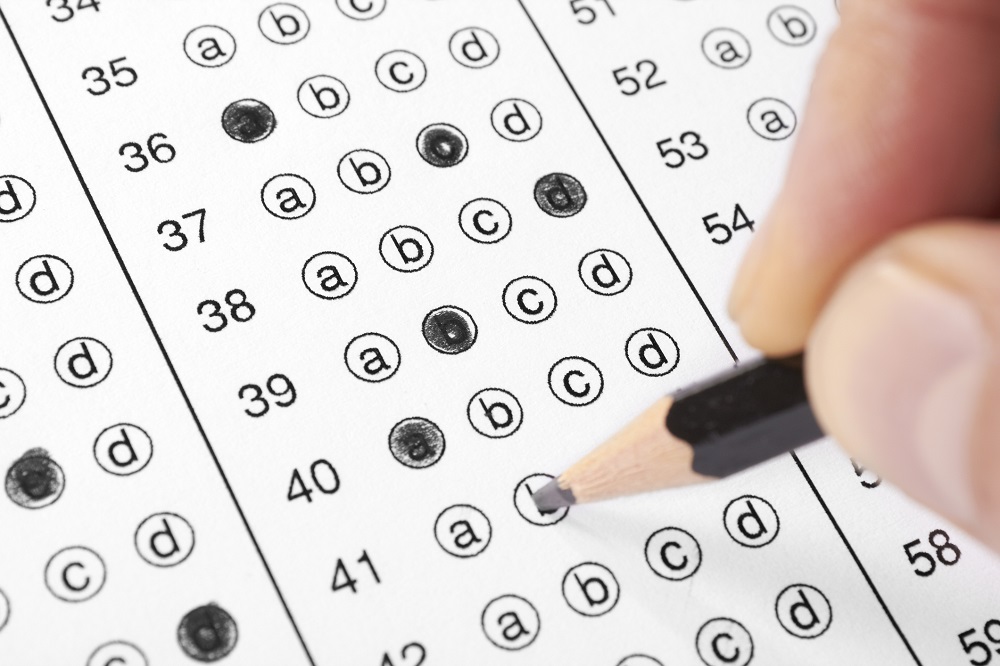Designing and conducting an Authentic Listening course – Part 1
Have you ever thought about designing a course focusing exclusively on listening? In this first article of her new series, Chiara Bruzzano discusses why she decided to design an ‘authentic listening’ course, why learners need it and how the course differs from other approaches.
Some of you may not know this about me, but I’m a big listening nerd. I studied listening comprehension for my MA dissertation, I did a whole PhD about it, I wrote teacher development materials and articles about teaching listening – including one where I created a chart with Disney princesses to address the claim that listening is the ‘Cinderella skill’ … you get the picture.
As a result of such deep levels of nerdiness, I often find myself talking about listening with fellow teachers, and one of the complaints I hear most often is “I’d love to do more listening, if only I had the time!”
I can very much empathise with this: teaching listening in a way that goes beyond using comprehension exercises from the textbook takes a lot of time between preparing the materials, conducting the activity and dealing with the affordances of listening in the classroom. As I suggested when I reported the results of a Twitter survey about ditching the textbook, systemic problems in the field of ELT mean that teachers are not paid for time developing their materials (if they are paid for preparation time at all).
This situation is common and I, too, experience it. However, I recently found myself in a privileged position, whereby I could design my own course and deliver it for university-level students and researchers. I could design the syllabus and the final assessment. It was a moment I had been waiting for… after years researching listening, I did finally have the time to do a whole course about it!
So I set out to design my course proposal, which then got accepted, and I am now in the last few weeks of my Authentic Listening course. I only know of few other courses focusing exclusively on listening (though if you teach one, please share the good news in the comments section!), so I have decided to write a few articles about my experience. This is the first article in a series and I will begin by discussing the rationale behind the course.
Why do we need ‘authentic listening’?
I would say that we need authentic listening in the sense that:
- our students need to become used to dealing with real spoken English;
- they need to be faced with real listening difficulties and learn to overcome them;
- we also need authentic listening as a way to take stock of the approaches to listening we have used so far (more on this below) and reconceptualise them as more balanced approaches.

Dealing with real spoken English
One of the key problems reported by teachers (and even learners, as it turns out) is that textbook and exam preparation materials are based on a type of speech that is scripted and not spontaneous. In other words, it does not resemble the features of the English that learners will hear outside of class. You can read more about this in Richard Cauldwell’s work (he even has a blog, Speech in Action about it), but suffice it to say that in my own research with secondary school students, some of them referred to the recordings they listened to in class as ‘artificial’ and ‘just not real English’. Pedagogical materials are often scripted, which removes some of the key features that characterise spontaneous speech and make it harder to understand.
Further, despite some recent changes in this trend, textbook materials are still overwhelmingly based on American and British English. Outside of our classrooms, however, learners will be faced with all sorts of English varieties. If, as some studies suggest, familiarity with an accent plays a key role in listening comprehension, exposing our learners to a wider range of varieties should ultimately be beneficial (Major et al, 2005; Ockey and French, 2016).
One additional issue is that of genres and text types: textbook materials may simply not provide enough variety or enough examples of the specific genres that our learners need to become familiar with. In my course, for example, I identified academic lectures, interviews and non-academic dissemination talks as key genres for my learners (although this then changed a bit when I did my Needs Analysis).
Dealing with real difficulties
A key implication of using scripted, somewhat simplified listening materials is that learners may not find them as difficult. This is of course different from saying that they do not find listening activities difficult: a commonly reported difficulty among the school learners I surveyed was the exercise format associated with listening activities, e.g. essay questions or multiple-choice questions. It was the type of exercise itself that was often considered a substantial hindrance to listening comprehension, rather than the input itself.

This is a type of difficulty that learners certainly have to identify and overcome for the relatively short-term purposes of taking exams. Beyond that, however, they are mostly unlikely to have to sit, listen to an audio and answer a series of comprehension questions. In ‘real life’, the difficulties they will have are going to be specific to them and related to a host of factors, including the input (e.g. vocabulary, grammar), the speaker or speakers (e.g. accent, hesitations), their surroundings (e.g. background noise) and themselves as listeners (e.g. anxiety, concentration).
In order to be somewhat prepared for this, learners need to a) understand listening (which includes understanding the task, their specific difficulties and the strategies needed to listen successfully) and b) apply the listening strategies necessary to listen successfully. Of course, very proficient learners will not need to apply a great deal of compensatory strategies because for them, the process of listening will be automatised to a great extent, much like it would be in their L1. However, for learners who are anything but very proficient, this will be a necessary step.
To better understand this, I always go back to an excellent article by Christine Goh (2010), a listening researcher. In her extensive work on listening comprehension, metacognition and listening pedagogy, she draws on Flavell (1976) and explains that learners need to develop two aspects of their metacognition: metacognitive knowledge (i.e. knowledge about the task, the listener and the strategies needed to accomplish the task) and metacognitive strategies (i.e. the ability to plan, monitor and evaluate one’s listening both for a specific listening task and in terms of one’s general development).
Examples of metacognitive planning strategies related to a specific listening task are previewing main ideas or deciding in advance which aspects of the text to concentrate on. Examples of monitoring are checking one’s understanding during listening and, when facing difficulties, identifying the source of difficulty. Finally, examples of evaluating strategies are determining one’s overall comprehension of a text and determining the effectiveness of the strategies used.
In my course, I set out to develop both metacognitive knowledge and metacognitive strategies. I will discuss the specific activities I used in the following articles in this series, but one key activity was that of metacognitive discussions, that is, post-listening discussions about learners’ difficulties and what strategies were successful or unsuccessful in tackling them.
How is ‘authentic listening’ different from what we were already doing?
I am not necessarily saying it is 100% different. I am cautious about using all-encompassing definitions as we cannot really know what teachers are doing in their contexts. This includes the use of the ‘Comprehension Approach’ label that we see so often in listening research, which states that teachers follow a listen-answer-check pattern in their classes and over-use comprehension questions. This may be true to some extent, but I have found that listening activites and teachers’ rationales are far more diversified and complex than this – a point also raised by Graham et al (2014).
Broadly speaking, however, trends in listening pedagogy identified in the relevant literature have included this Comprehension Approach (where the focus is on the product of listening in the form of answers to comprehension questions), an Osmosis Approach (whereby listening will develop on its own with sufficient extensive practice) and a Listening for Other Purposes Approach (in which listening is done for something else, e.g. teaching grammar or generating a discussion).
In my authentic listening course, I combined an explicit focus on the processes and strategies of listening, the planning and implementation of extensive listening outside the classroom and, to some extent, the use of listening to generate discussions (both about the content and about the listening experience itself).

On a fundamental level, I am trying to focus on listening for listening’s sake. Two important caveats are that I can do this because I have no institutional constraints in terms of course design and my students are already intrinsically motivated to listen, so they do not need a “reason” to listen (which may come in the form of guiding comprehension questions in other classes).
Conclusion
Thank you for letting me nerd out about listening and my listening course! I hope you will come back for the second part of this series, where I will discuss what I did in the course more specifically.
What are your burning questions about listening? What are your main difficulties teaching listening? Let us know in the comments section.
References
Flavell, J. H. (1976). ‘Metacognitive aspects of problem solving’ in Resnick, L.B. (Ed, 1976). The Nature of Intelligence, 231–5. Hillsdale: Lawrence Erlbaum Associates.
Goh, C. (2010). ‘Listening as process: Learning activities for self-appraisal and self-regulation’ in Harwood, H. (Ed, 2010). English language teaching materials: Theory and practice, 179–206. Cambridge: Cambridge University Press.
Graham, S., Santos, D. & Francis-Brophy, E. (2014). ‘Teacher beliefs about listening in a foreign language’. Teaching and Teacher Education 40, 44-60. Amsterdam: Elsevier B.V.
Major, R. C., Fitzmaurice, S. F., Bunta, F., & Balasubramian, C. (2002). ‘The effects of non-native accents on listening comprehension: Implications for ESL assessment’. TESOL Quarterly 36(2), 173–190. Hoboken: Wiley.
Ockey, G., & French, R. (2016). ‘From one to multiple accents on a test of L2 listening comprehension’. Applied Linguistics 37(5), 693–715. Oxford: Oxford University Press.

Comments
Write a Comment
Comment Submitted